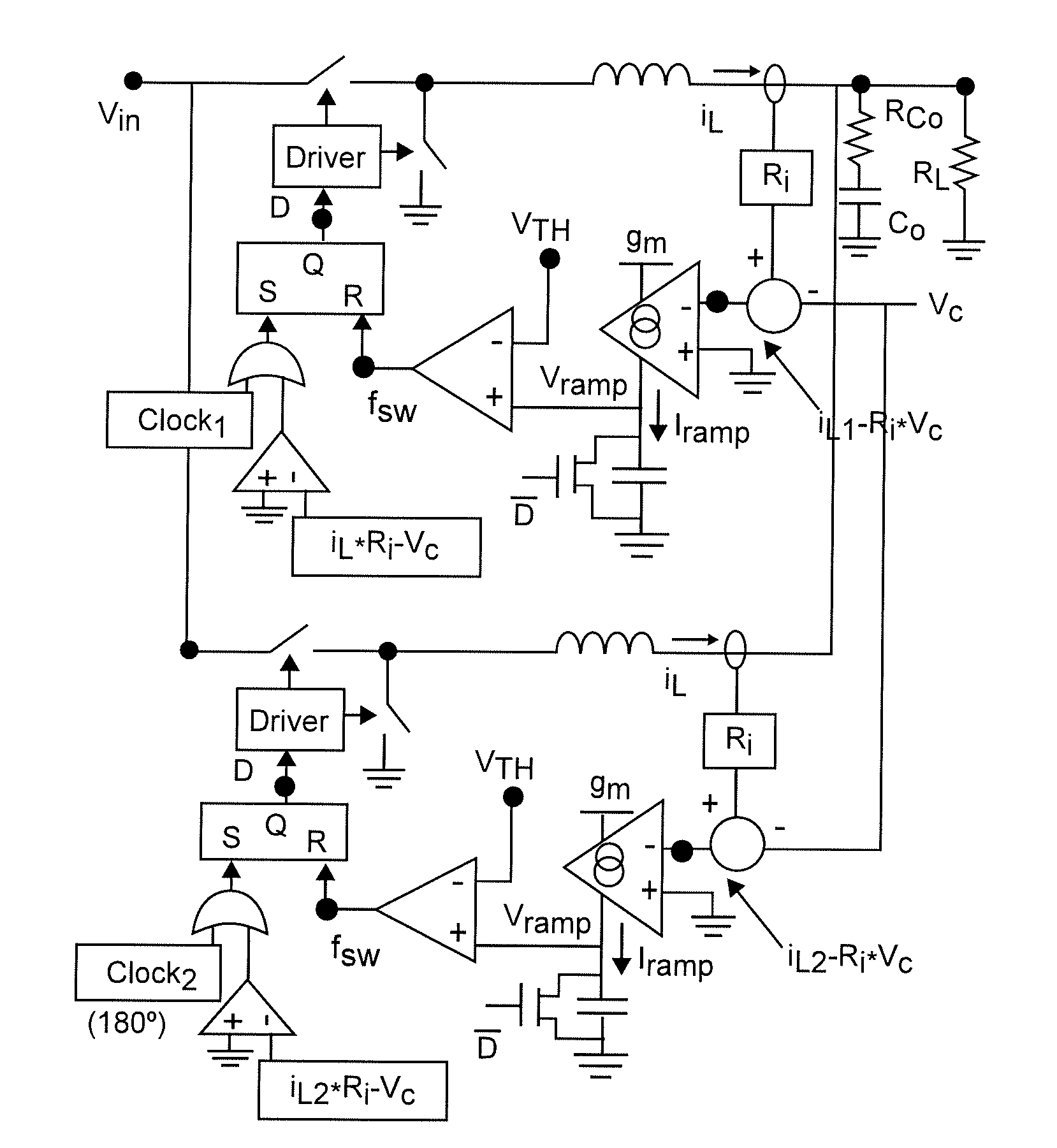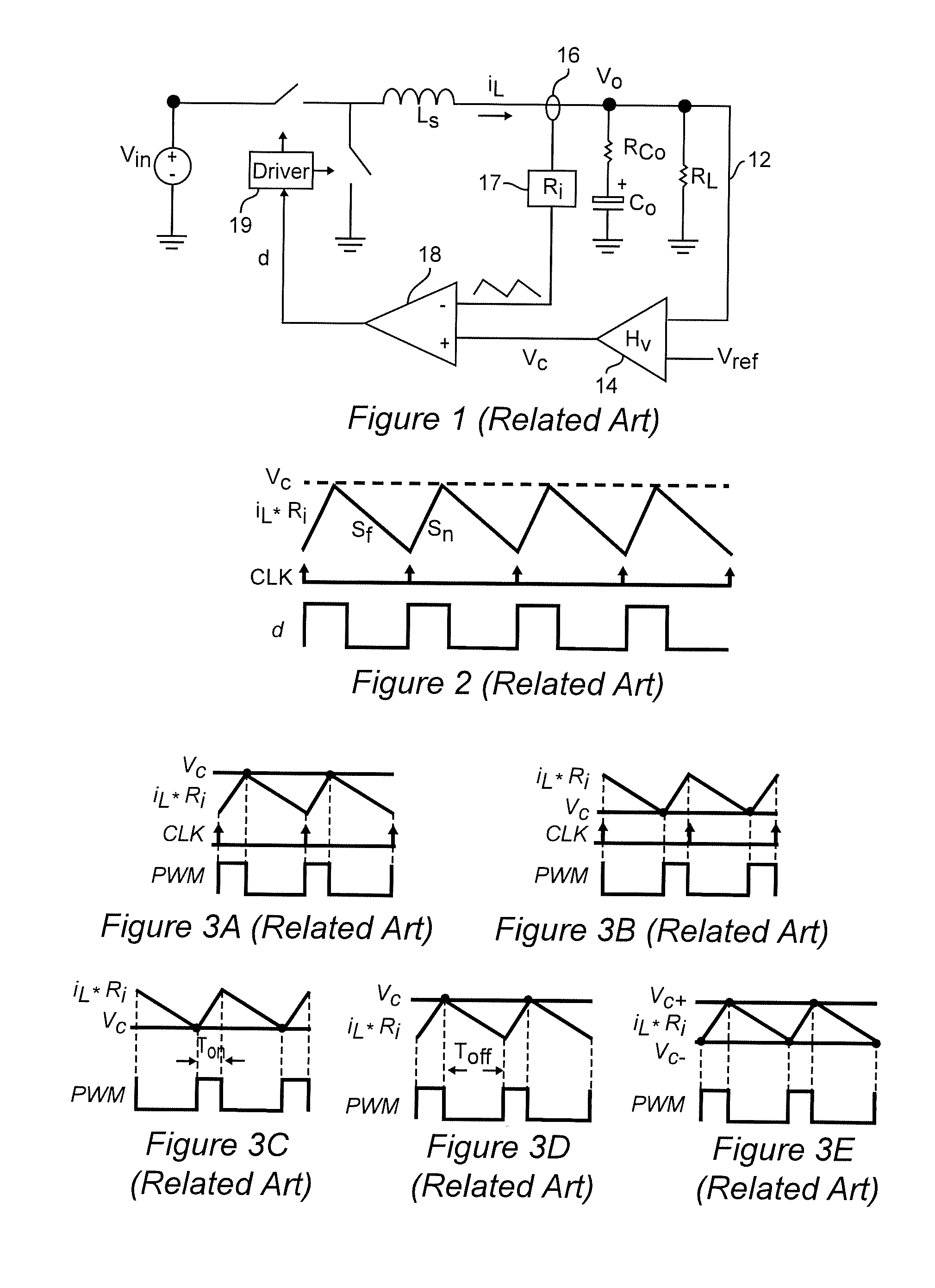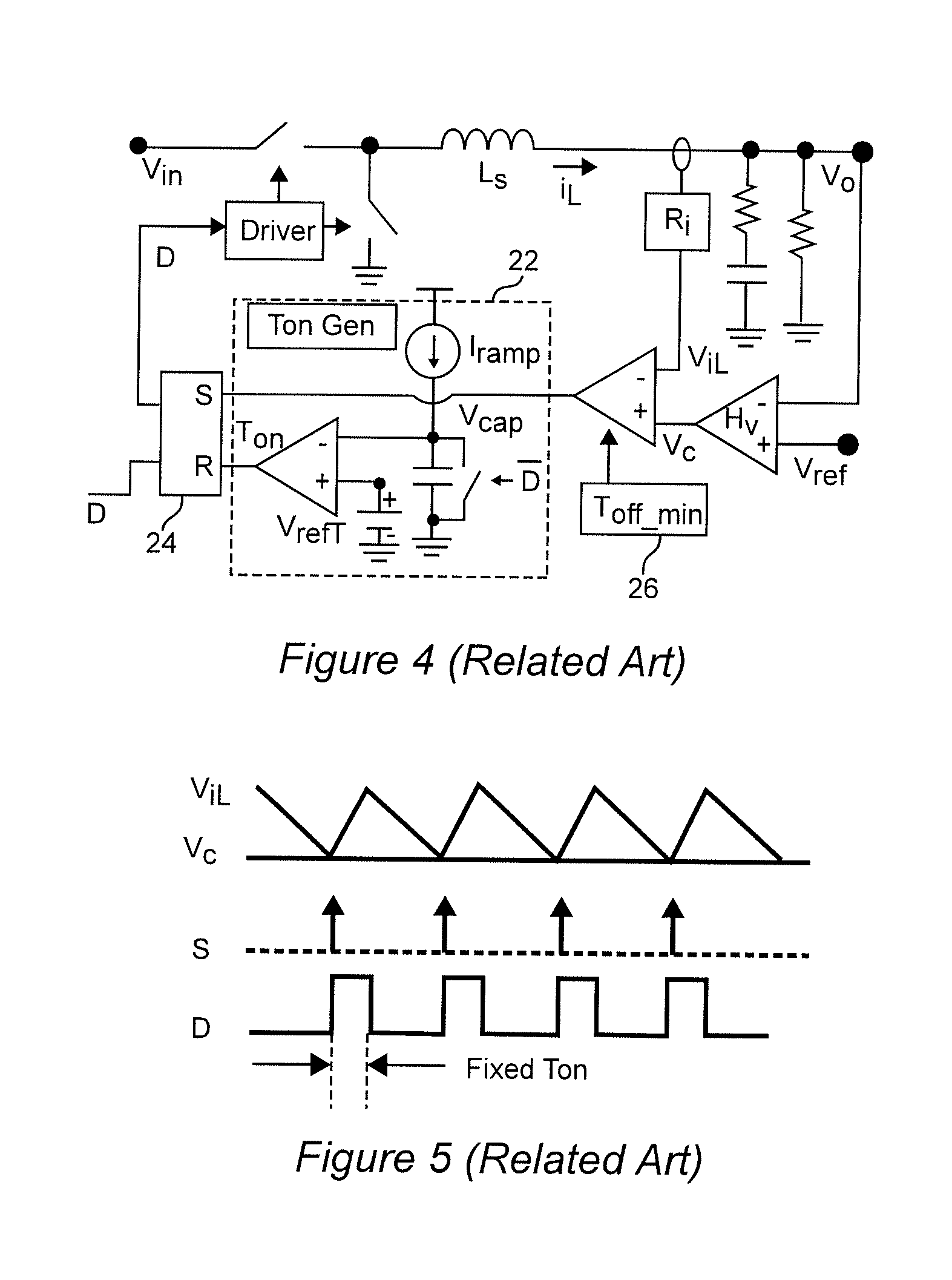Inverse Charge Current Mode (IQCM) Control for Power Converter
a power converter and current current control technology, applied in the control method and system field of dcdc power converters, can solve the problems of cot control, f/sub>sw/sub> variation of switching frequency, significant limitations, etc., and achieve the effect of increasing speed and reducing tim
- Summary
- Abstract
- Description
- Claims
- Application Information
AI Technical Summary
Benefits of technology
Problems solved by technology
Method used
Image
Examples
Embodiment Construction
Embodiment of the Invention
[0047]Referring now to the drawings, and more particularly to FIG. 1, there is schematically shown a very basic power converter structure employing current mode control. It should be understood that FIG. 1 and other FIGS. 2-32 are generalized and arranged to facilitate understanding of the basic principles of power converter control and the limitations and problems thereof which will, in turn, facilitate conveying an understanding and appreciation of the invention and its meritorious effects by comparison therewith. Therefore, no portion of any of FIGS. 1-30 is admitted as prior art in regard to the present invention and these figures have been labeled “Related Art”. It should also be understood that while the invention will be generally illustrated and discussed in the context of a so-called buck-converter topology because of its simplicity and familiarity, the invention is equally applicable to any other single or multi-phase switching power converter to...
PUM
 Login to View More
Login to View More Abstract
Description
Claims
Application Information
 Login to View More
Login to View More - R&D
- Intellectual Property
- Life Sciences
- Materials
- Tech Scout
- Unparalleled Data Quality
- Higher Quality Content
- 60% Fewer Hallucinations
Browse by: Latest US Patents, China's latest patents, Technical Efficacy Thesaurus, Application Domain, Technology Topic, Popular Technical Reports.
© 2025 PatSnap. All rights reserved.Legal|Privacy policy|Modern Slavery Act Transparency Statement|Sitemap|About US| Contact US: help@patsnap.com



